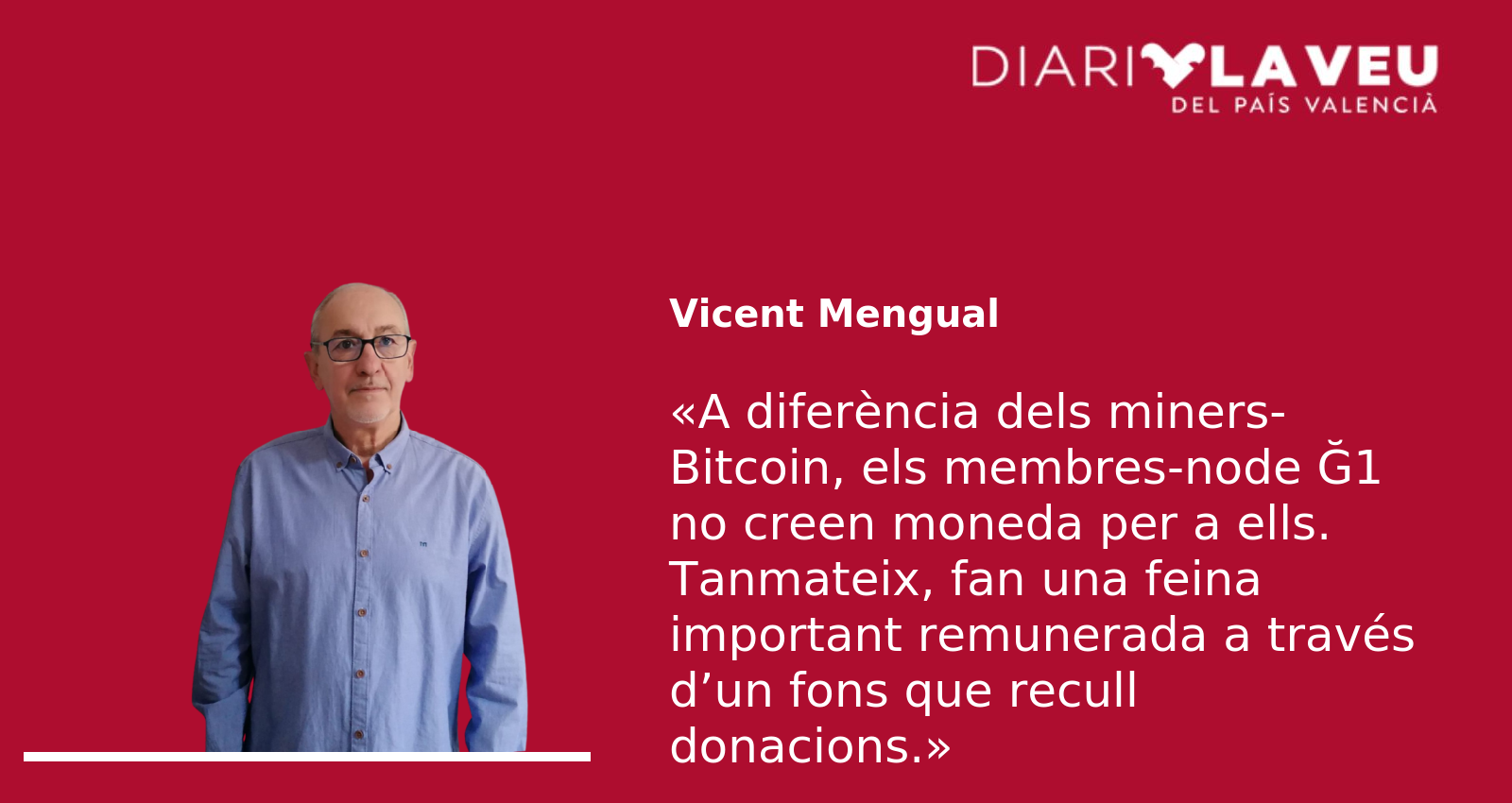Bitcoin's software is open source and IT experts can download it and modify it to suit their purposes. The project Ğ1 (la juna), which is co-produced as Universal Dividend (DU) (see “Aim for the right”), uses Bitcoin technology, the blockchain. This is called Ğ1 Doneter (screen du). Blockchain is an accounting ledger and currency registry that is controlled and updated in a decentralized manner. Each block will be a page. All participants in the currency are interconnected in a network. Within it, anyone who wishes can download a copy of the series and participate in its maintenance and updating. They are the subnetwork of nodes.
Node computers collect, verify and record information about events occurring in the coin, which will form the next block. The blog content is summarized in Figure A Encryption code Which closes the page and represents a timestamp that ensures the stability of the accumulated information. The sequence of pages is designed so that the cryptographic code that closes one block is the element that opens the next block. So blocks are written and locked (forged) at time intervals, every 10 minutes in Bitcoin and every 5 minutes in Ğ1 (both on average).
The timestamp (cryptographic code) provides order and control not only in the decentralized maintenance of the ledger, but also in the time programming of important automation. For example, every 4 years, Bitcoin halves the amount of currency a node can obtain in the mining process; This will happen until the maximum circulation reaches 21 million Bitcoins. Miners are getting fewer bitcoins, hoping to increase their prices, as they are the rarest production. In the case of Ğ1, every day at around 13:00 the block records the creation of one DU per member (This is a concept that we will explain later) and at this moment it is 10.78 Ğ1.
Ep!, wait: I said that all node computers are preparing the next block, but the result of decentralized control must be a single copy of the book. That is, only one of the nodes will form the next block and share the updated version of the chain with the rest of the nodes. Then everyone will start working on the next block. How could a node be the one chosen to form a block?
Bitcoin does this by holding a one-on-one competition to find the aforementioned cryptographic code (they call it proof of work). This is a puzzle whose difficulty is automatically regulated in order to maintain an average target time. In Bitcoin, the creation of a new coin (they call it mined) is the prize (currently 6.25 BTC) for the winning node, which, in addition, receives commissions for all transactions in the forged block.
Since the launch of Bitcoin, energy consumption in mining operations has increased significantly. If the Bitcoin network were a countryIt will rank 27th in electricity consumption – between Malaysia (26th) and Ukraine (28th) – and will provide nearly 50% of UK consumption. because? By designing Bitcoin with regard to maintaining a time target of an average of 10 minutes per block. The cryptographic puzzle can only be solved by experimenting and experimenting with combinations; The desire to win and take the prize translates into assembling more and more powerful mining computational equipment that will reduce the protocol time if Bitcoin does not automatically react through the complexity of the cryptographic puzzle. Through loops, miners increase computational power by building giant computing farms, parallelizing power consumption, etc.
At the time of writing, Bitcoin has 17,581 nodes Wallets containing bitcoins are estimated at tens of millions. At the same time, Ğ1 contains 109 nodes I 37,355 wallets Between members and non-members, which can represent about 15,000 people. As we will now see, the difference between the competitive or cooperative spirit of these projects is clearly evident in the design of the coin's creation.
In Ğ1 there is a concept memberdoes not exist in Bitcoin. At the time of writing there were 8,566 members Which forms a network of trust based on the fact that new members are personally known and approved by existing members. All members create currency, whether they participate in the contract forgery blockchain or not, but only members can be a contract. Node members provide a service by maintaining a ledger and accounting, but do not have the privilege of creating currency; They also do not receive commissions per transaction, which does not exist in Ğ1.
Blockchain Ğ1 also uses Proof of Work. Ensuring the uniqueness of the ledger requires that only one node win the competition, form a new block, and share the update with other nodes. However, the demand for computational power is minimal (no more than on a standard personal computer), since the difficulty of the cryptographic puzzle that makes up the string is always low. In addition, the established protocol favors node rotation. The race to increase computational power is futile in Ğ1.
Node rotation is guided by difficulty allocation through two mechanisms. (a) Disability It equalizes the computational power of different nodes by assigning a disadvantage to those who at a given time have forged more blocks than average. (B) Exclusion It imposes a huge increase in difficulty on those who have just formed a block, which, in effect, separates them from subsequent verifications; The difficulty is then returned to the normal low value to be included again.
I have already said that, unlike Bitcoin miners, members of node Ğ1 do not create a currency for themselves. However, they do important work that is paid for through a fund(1) Which collects voluntary donations. Every 500 blocks, the fund pays to everyone who forged a block, at a rate of 0.20 Ğ1 per registered block. At intervals of 1.73 days on average, the fund currently distributes 100 x 1 funds among approximately 30 member nodes.

“Infuriatingly humble social media buff. Twitter advocate. Writer. Internet nerd.”



